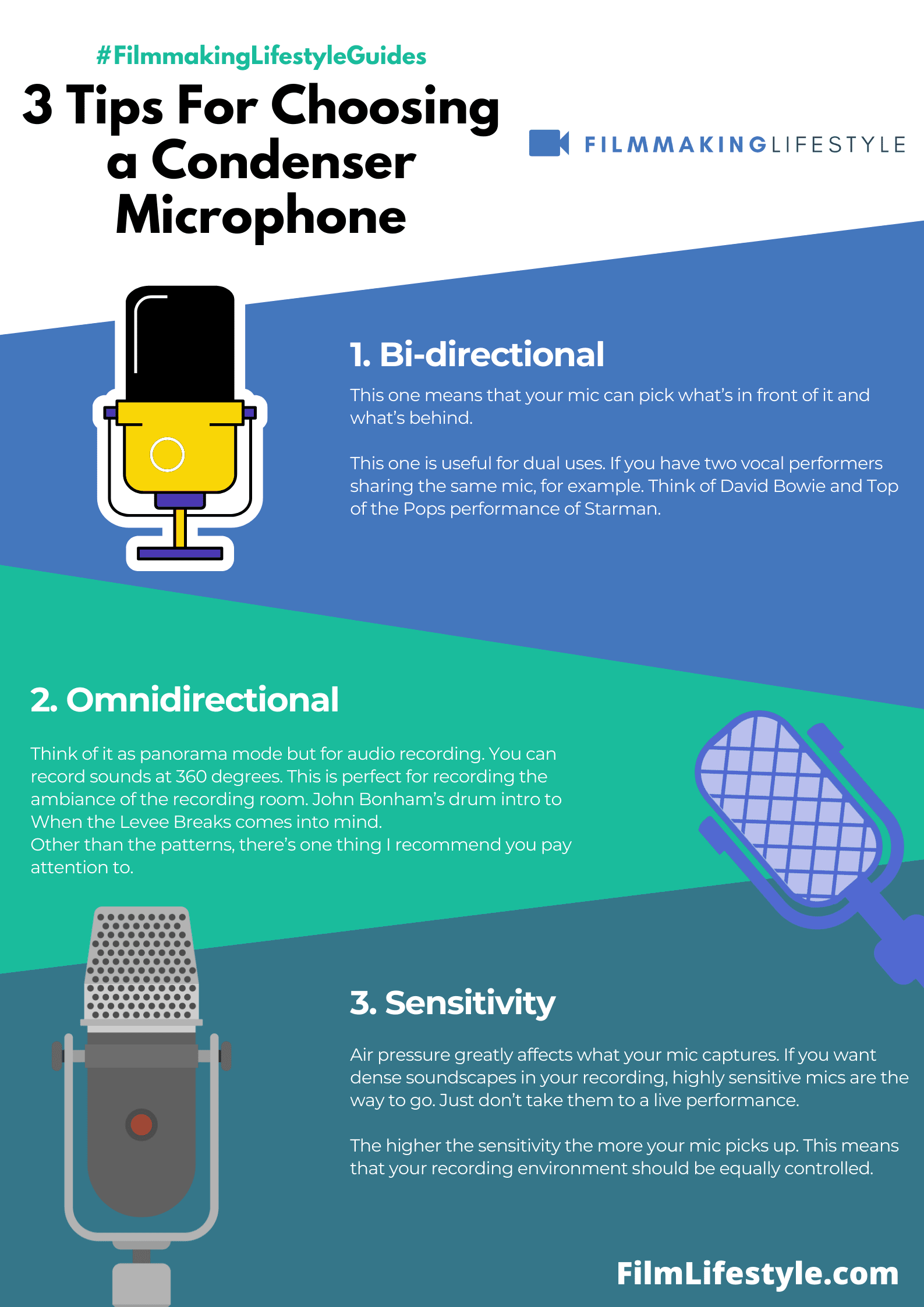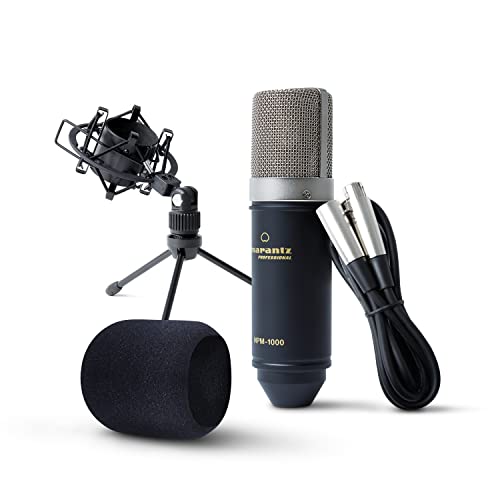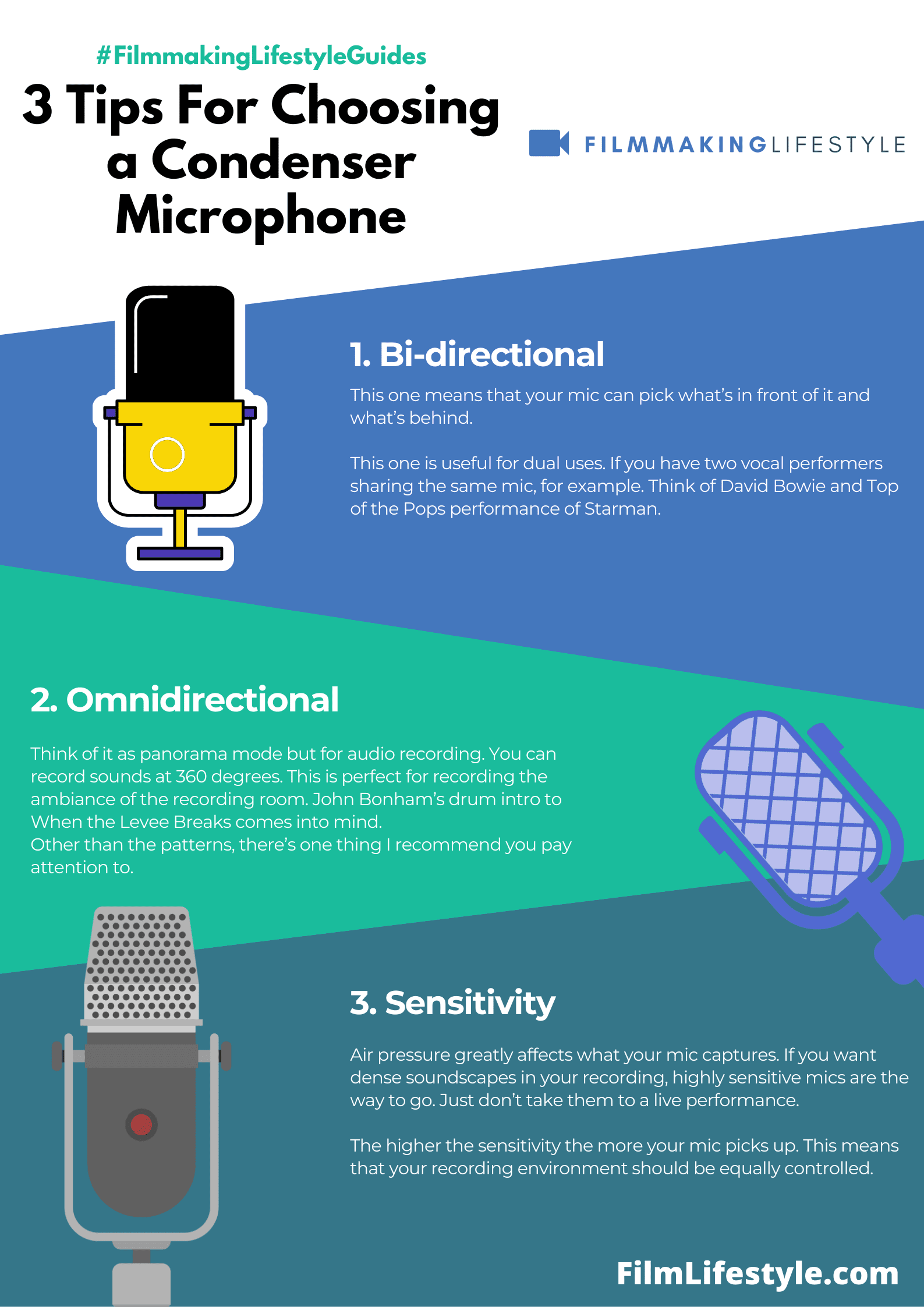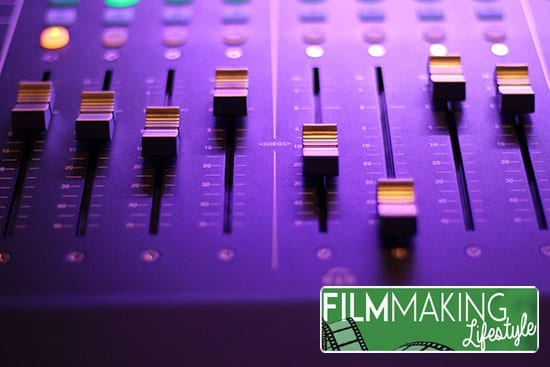If you’re new to audio engineering and sound mixing, you might find yourself in a doozy over the large number of microphones available on the market. Have you ever wondered: what is a condenser microphone?
Which microphone works for what purpose and which one is best suited for your needs. The answer, as usual, depends entirely on you.
Steely Dan’s producer Gary Katz spent years testing different mics and instrument combinations until he found the best ones for each instrument.
You don’t have years and loads of cash to do that so today I’ll attempt to set you on the right path when it comes to mic choice. This guide is a brief introduction to condenser microphones.
WHAT IS CONDENSER MICROPHONE
What Are Condenser Mics?
Condenser microphones are far more sensitive than dynamic mics. This sensitivity makes them appropriate for recording acoustic instruments, as well as capturing ambient sounds in a room.
Condenser microphones are also more directional than dynamics. While even the cheapest dynamic mic will pick up sound from all around, condensers focus on what’s directly in front of them.
As a result, they’re ideal for recording vocals or acoustic guitar, or capturing sound at a distance — say, a choir singing or an orchestra playing.
I’ll talk about the condenser microphone, what it does and how it differs from a dynamic mic. I’ll also discuss which uses they are best tailored for.
Lastly, I’ll mention a few condenser microphones that I think are worth it and what you should consider when buying one.
First up, here are a number of the best selling condenser mics currently available:
What Is A Condenser Microphone?
A condenser microphone is a mic that captures a larger frequency range than a dynamic mic. You’ll mostly find it in recording studios.
Condenser microphones have a great transient response. In essence, it means that they can better capture the authentic sound of an instrument and its speed.
Recording from condenser microphones tends to be louder as they are very sensitive to louder sounds. Therefore, they can catch all the nuances of a performance. Assuming, your performer knows their instrument front and back, of course.
In terms of power usage, condenser microphones require a lot of power (48V). But that’s no problem, considering that studios are equipped to handle these mics adequately. Most external power supplies are able to power them just fine.
Now if you’re wondering why studio recordings tend to be more nuanced, crisp and louder, the answer is simple. Condenser microphones are very fragile. Thus, they can’t be used in live recordings.
For those, we use dynamic microphones. Unlike condenser microphones, dynamic ones are more durable and rugged. Therefore, we can use them in a live recording or a club without worrying about them breaking easily.
If your dynamic mic falls off or gets kicked, it’ll likely still work. If that happens to a condenser you better head to the music shop for another.
Condenser Mic – What You Need to Know
The flip side to all of this is that they aren’t on par with condenser mics recording quality. They don’t have nearly the same frequency range or transient response.
So if you’re wondering why do most live recordings of your favorite songs not sound as good as the studio version, this is it. So be sure to give the musicians on stage a break.
One last difference between the two types of mics is that dynamic ones don’t require as much power to operate. So they’re far easier to set up and get rolling. One more reason to use these for live recording is convenience.
One more thing about condenser microphones is that they’re far more expensive than dynamic microphones.
I’m sure someone will mention that you can find condensers at a more affordable price. That’s true, but keep something in mind.
Cheaper condensers are inferior in quality. They tend to capture a lot of distortion, unfortunately. So unless you’re just starting out and want to experiment I wouldn’t recommend them.
What Are The Types Of Condenser Mics?
There are two types, small-diaphragm ones, and large-diaphragm microphones. What’s the difference?
Well, small-diaphragm mics are best suited for recording string instruments since they offer the best wide-frequency recording.
Meanwhile, large-diaphragm mics are best suited for vocals since they add a layer of warmth to whatever you’re recording. Of course, be careful with distortion that could be caused when you emphasize certain sounds.
In general, I recommend small diaphragm mics for any recording jobs you need to. They generally offer a well-balanced recording quality. You could always test both so you get a better feeling for what each one’s strengths and weaknesses are.
What Are The Best Uses For Condenser Mics?
While the specifics are more complex than a simple use this for this and that for that, there are some general rules of thumb.
If you are recording high-frequency instruments like acoustic guitars, electric guitars, pianos and woodwind instruments, especially, these are best suited for condenser microphones.
On the other hand, lower frequency instruments like drums are better off recorded with a dynamic microphone.
The reasoning for that is higher sound pressure produced by drums and other loud instruments tend to damage condenser microphones.
That is because the Diaphragm built into the condenser mic is far more fragile than its Dynamic counterpart. So be careful what you record with your condenser microphone.
What Should I Consider Before I Buy A Condenser?
Well, on top of everything that I already mentioned there are a few specificities you need to put into consideration.

Polar patterns: these dictate how much your mic can pick up. Some mics can pick the solitary sound of an instrument.
Meanwhile, others can pick the sound of an entire band. Make sure you read the polar pattern of a mic to know what it can and can’t pick up. Some mics offer you the option to switch the pattern depending on your specific needs.
“But I don’t know how to read patterns.” you might say and to that, I respond, “Don’t worry, I got you covered.” there are only a handful of things you need to memorize.
Cardioid pattern: It means that a mic can only pick what’s in front of it. This is perfect for recording a single instrument or a vocal performance.
Bi-directional
This one means that your mic can pick what’s in front of it and what’s behind.
This one is useful for dual uses. If you have two vocal performers sharing the same mic, for example. Think of David Bowie and Mick Ronson’s top of the pop performance of Starman.
Omnidirectional
think of it as panorama mode but for audio recording. You can record sounds at 360 degrees. This is perfect for recording the ambiance of the recording room. John Bonham’s drum intro to When the Levee Breaks comes into mind.
Other than the patterns, there’s one thing I recommend you pay attention to.
Sensitivity
Air pressure greatly affects what your mic captures. If you want dense soundscapes in your recording, highly sensitive mics are the way to go. Just don’t take them to a live performance.
The higher the sensitivity the more your mic picks up. This means that your recording environment should be equally controlled.
What Are The Best Condenser Microphones?
While I can definitively answer that question, I can recommend a few good mics. We’ll split it into 2 categories. First, we have large diaphragm mics.
Audio Technica AT2035
For your first large-diaphragm mic, AudioTechnica is offering a great introduction to this type of mic for a more than affordable price. It offers multiple pick up patterns which is always a great thing.
The mic comes with a custom shock-mount and vinyl pouch for extra protection. In terms of performance, it’s not bad at all. It has far less noise pick up than any mic in this price range.
AudioTechnica did a splendid job designing the AT2035. With its matte black finish and streamlined controls, it certainly looks far more expensive and professional than its price tag would imply.
Speaking of price, AudioTechnica priced the AT2035 at a very reasonable price tag that fits most budget levels. If you want to pick up your first large-diaphragm mic but are afraid of investing too much, this is a great first tryout.
No products found.
Now for my small diaphragm mic recommendation.
Rode NT5 Matched Pair
Rode has a reputation for making great mics at affordable prices. The best offering they have for small diaphragm mics, in my opinion, is the Rode NT5 matched pair.
Why get one mic when you can have two quality mics. In terms of performance, this one is a winner.
It’s able to capture complex sounds incredibly well and without any distortion. Similarly, it’s a great choice if you want to record string instruments.
It gives a bright and crisp sound that’s not usually found in this price range. These mics are preferred by people who want to mic stereo sound.
They are nicely designed as well, giving off a professional look and feel. The sleek metal design is a favorite of mine. Rode priced these babies very reasonably and it’s a sweet deal if you ask me.
Overall, if you’re looking for reasonably priced small diaphragm mics with great performance these are for you.
- Small-diaphragm Matched Pair Cardioid Condenser Microphones
What Is Condenser Microphone – In Conclusion
There are no perfect mics for each case and there are certainly no perfect mics for every case.
Microphones, much like cameras, are unique equipment that require some experience and familiarity with in order to squeeze the best performance out of them.
You’ll need to experiment with a few mics at the very least before you find what’s perfect for you.
Hopefully, this guide has eased you into condenser mics and has given you an idea of what you need to consider and look for when buying one.
The rest is on you: you can now find a mic that works best for your needs. Good luck.
We have Gear Buyer’s Guides on every type of Filmmaking Equipment!













